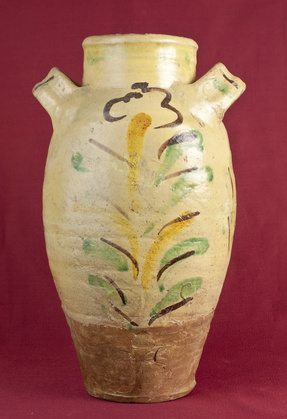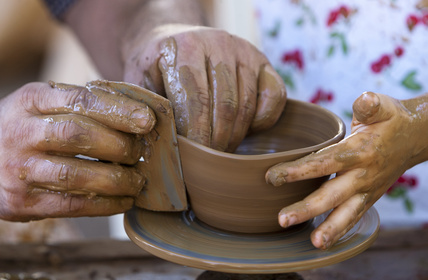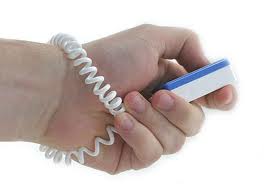During vacations and holidays, moms and dads have a lot more unstructured time with their children with autism. During this time, we may engage in a lot of wishful thinking. “I wish he would play with legos. I wish she could go on a play date. I wish he did something other than running around and screaming.”
Let’s change this pattern of wishing
During my son’s younger years, I made the mistake of thinking about the behaviors I wanted him to do, as opposed to thinking about what he was actually doing. I kept thinking of behaviors in terms that were too big and too complicated. I wanted him to play games, interact with kids his age, and have fun—according to my understanding of what should be fun for him.
This was wrong. This kind of thinking kept me focused on the deficits in his skill levels, and took away the many opportunities that were actually popping up every day to build up his skill levels. Instead, I should have been looking for the tiny micro-movements he was already performing that had the potential to be shaped into bigger functional skills. What do I mean?
 First, Move to a pattern of observing
First, Move to a pattern of observing
Well, if you look at the picture of this beautiful piece of pottery, please remember that it started with a soggy lump of clay. In order to make a beautiful pot, you start out with the clay, knead it, form a base, build up the sides, shape it, finish it, and bake it in an oven. It’s quite a process, with many steps. With our kids with autism, we have to take the same step-by-step approach.
Look at your child, and look for the smallest possible movements he is making with his body that could serve as the foundation for further behaviors. Does your child make eye contact with anything or anyone, even accidentally? If so, tag and treat all instances of eye contact, no matter how fleeting.
Does he touch anything? If so, tag and treat all instances of him touching functional objects (toys, books, household items). After he is touching these items, switch to tagging and treating every time he picks up an item, then when he holds an item, moves an item from one place to another, or plays with or uses the item.
Second, Move to a pattern of reinforcing
After you have built up your child’s skills in looking at interesting things and people, and built up his skills in touching and holding objects, you have the foundation for increasing play skills. Set out various play items and observe what your child does. By this time, he will understand that touching and handling these objects results in treats, praise and attention from mom or dad. He will most likely pick something up and do something with it.
It doesn’t matter if his action is inappropriate from our point of view, the goal is to get him handling these objects in different ways. See if he places one object on or near another object or holds two objects at the same time. Strengthen these behaviors with lots of positive reinforcement. If you have the good fortune to have other children or adults in the household who are around the child, reinforce your child with autism for looking at, walking close to, talking to, or interacting with family members.
 Third, Move to a pattern of shaping and building
Third, Move to a pattern of shaping and building
Now comes the time for creative observation and tagging. Keep observing your child and tag and treat all cute, clever and interesting things he does with these objects. This will encourage him to try more activities and to do these activities for longer times. The same goes for interaction with others. Watch the child’s interactions with objects and people and see if there are any times when these come together: he may show a toy to a person, or carry something to a person. If so, give yourself a hearty pat on the back. You have successfully set the foundation for teaching more play and personal interaction skills to your child.
By using positive reinforcement very precisely, parents can build up small physical movements into complete play skills. Naturally, I also recommend that parents consider using TAGteach (Teaching with Acoustical Guidance) for this process. TAGteach allows parents to deliver high rates of very precise reinforcement for even the most fleeting behaviors. Here is a review of the tag points for each phase. See the end of the article for more information about TAGteach.
Observe: Look for and tag these types of behaviors
Eye contact with object (book, toy, household item)
Touches object
Holds objects
Picks up object
Eye contact with person
Tag and Reinforce: When your child performs these types of actions
Picks up object
Pushes object
Moves object around
Holds two objects simultaneously
Walks near person
Walks to person
Interacts with person
Shape: Build more complex skills by reinforcing these types of actions)
Novel actions with objects
Shows object to person
Carries object to person
Carries 2 objects to person
What is TAGteach?
TAGteach stands for Teaching with Acoustical Guidance. TAGteach is a teaching and communication method based on the scientific principles of Applied Behavior Analysis (ABA).
TAGteach enables extremely precise positive reinforcement of behavior by using an acoustical signal to “mark” the behavior – at the precise moment the child performs the behavior! The acoustical signal is a short, sharp sound made by a handheld device (the “tagger”). When the child performs the correct action, the parent/instructor immediately presses the button on the tagger and hands over a treat (candy, treat, token, praise, social recognition, or money) as a reinforcer.
With TAGteach, it is easy to reinforce behaviors precisely and quickly. The immediate, accurate feedback and positive reinforcement result in the child performing the correct action more often, and for longer periods of time. With immediate feedback and learning tasks broken down into small steps, children can learn many new skills with TAGteach — at their own pace.
 For more information visit the TAGteach website.
For more information visit the TAGteach website.
Join the free TAGteach Listserve.
TAGteach taggers are available here.
See Martha’s book about TAGteach for Autism.
Feel free to ask me a question (with no oblication).
Sign up for my mailing list to receive updates, new articles and free tips right in your inbox!
If you liked this post, please share it on social media via the vertical gray menu on the far right. Thank you!
Comments are closed.